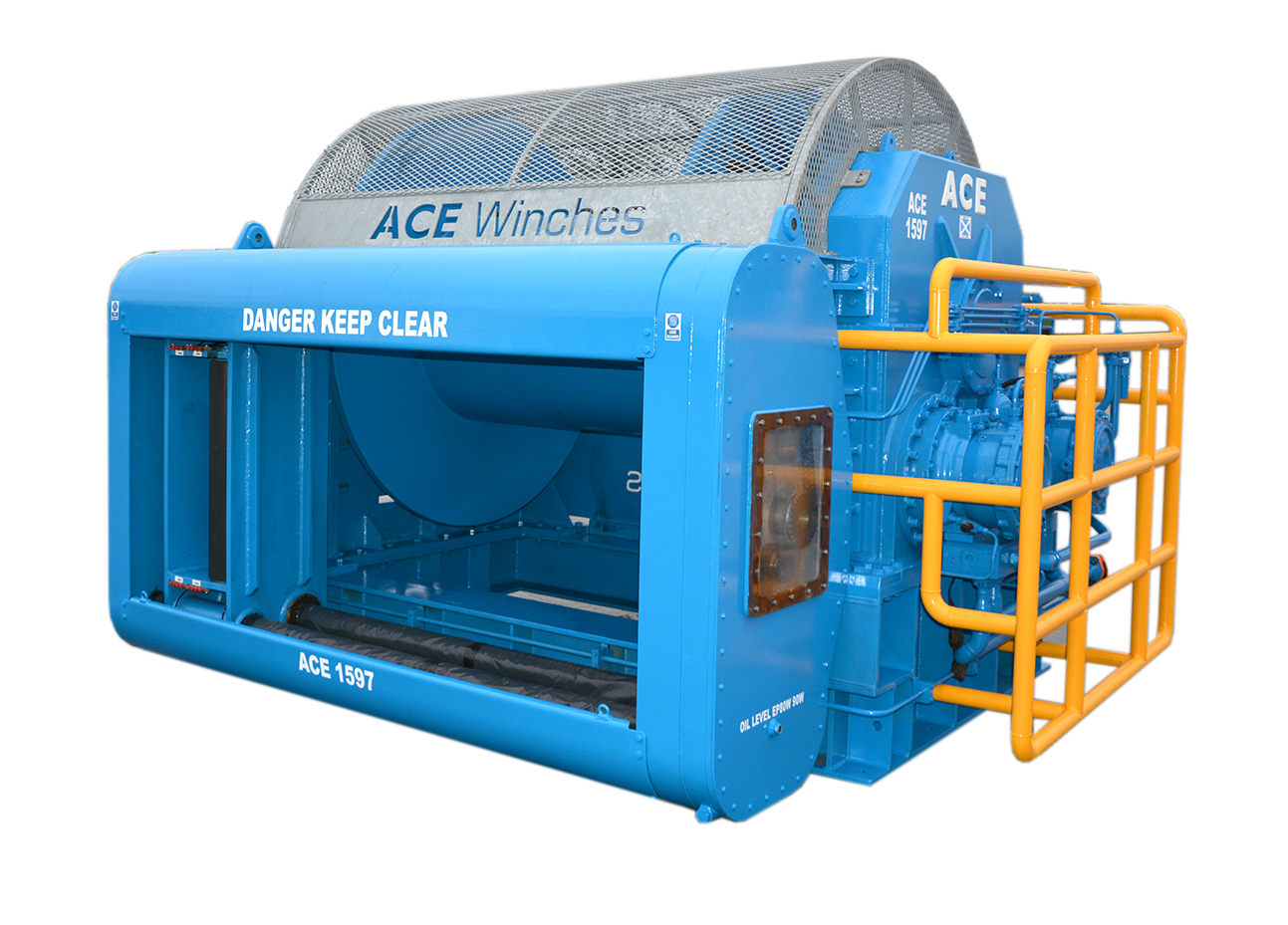ACE Active Heave Compensation Winches
The ocean surface is in continuous motion, presenting problems when operating vessel mounted equipment such as winches. The motion of the vessel is transferred to the load deployed on the winch, making tasks such as interfacing with seabed structures or deploying onto the sea difficult, and even dangerous, in heavy seas. This can restrict operations to short weather windows, causing expensive delays to operations.
Our Active Heave Compensation system can be applied to any offshore crane or winch application and are designed to ensure the constant deployment or retrieval of the winch hook load, or allow the hook load to be held stationary in relatively heavy sea states. This increases smoothness of operation and reduces stoppage due to weather constraints. With a focus on safety and cost efficiency, it also reduces the risk of damage to equipment during operation.
Features:
- Uses a Motion Reference Unit (MRU) to sense changes in position of the winch, compensating for the movement of the vessel by driving the winch in and out
- Real-time upload of data and sea conditions, calculating percentage capacity that is required to compensate for the current vessel movement
- Software from the MRU can be used to identify faults and make changes to the AHC system
- Automatic depth safety function prevents over deployment of wire rope length, avoiding seabed impact during automatic deployment operations
Key benefits:
- Decreases weather related downtime and increases effective operating window
- Increases precision by filtering out the impact of wave movement
- Reduces chance of damage to equipment due to snatch loads and slack wire, extending equipment life
- Reduces vessel idle time
Contact us to discuss how we can find a solution to your project requirements

ACE 18.5 Tonne SWL Hydraulic Drum Winch
Model Type: 1597
- Maximum Wire Capacity 2700 metres of 32mm wire on 13 layers
- 2 x 300kW Electric Hydraulic Power Unit
